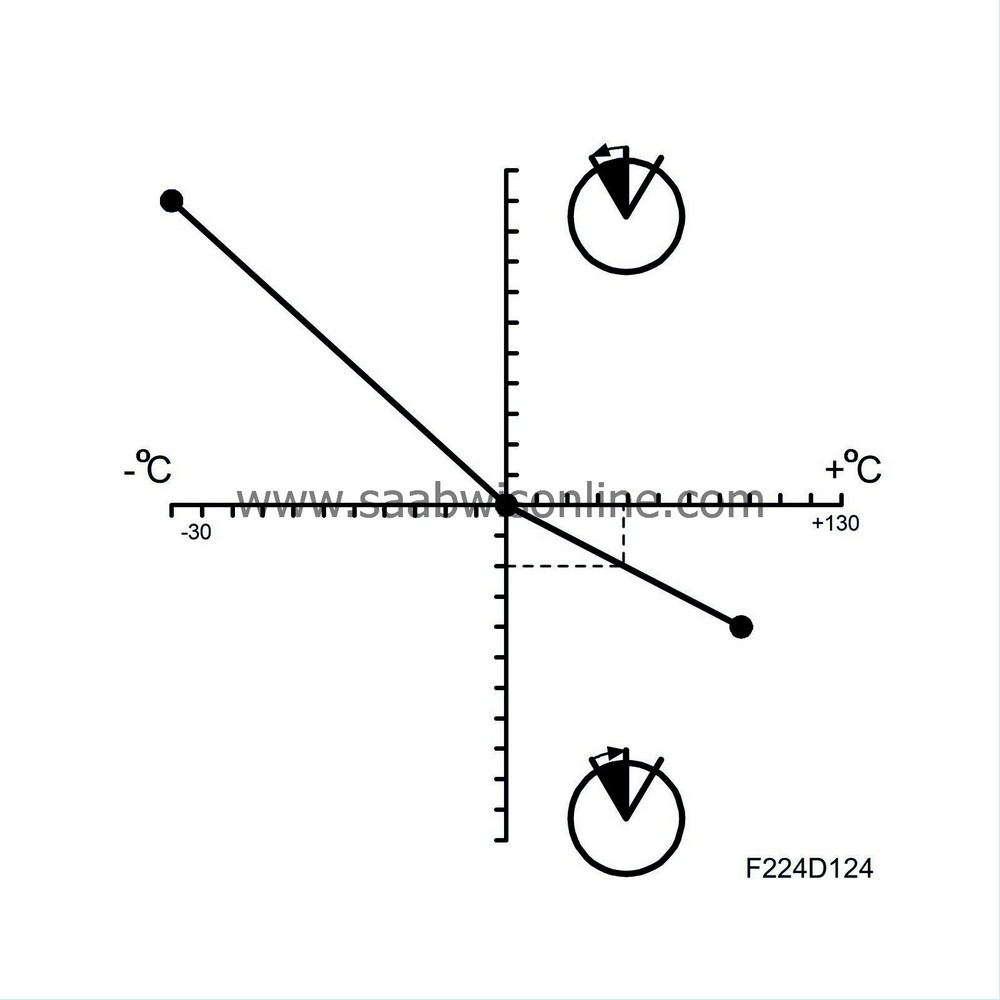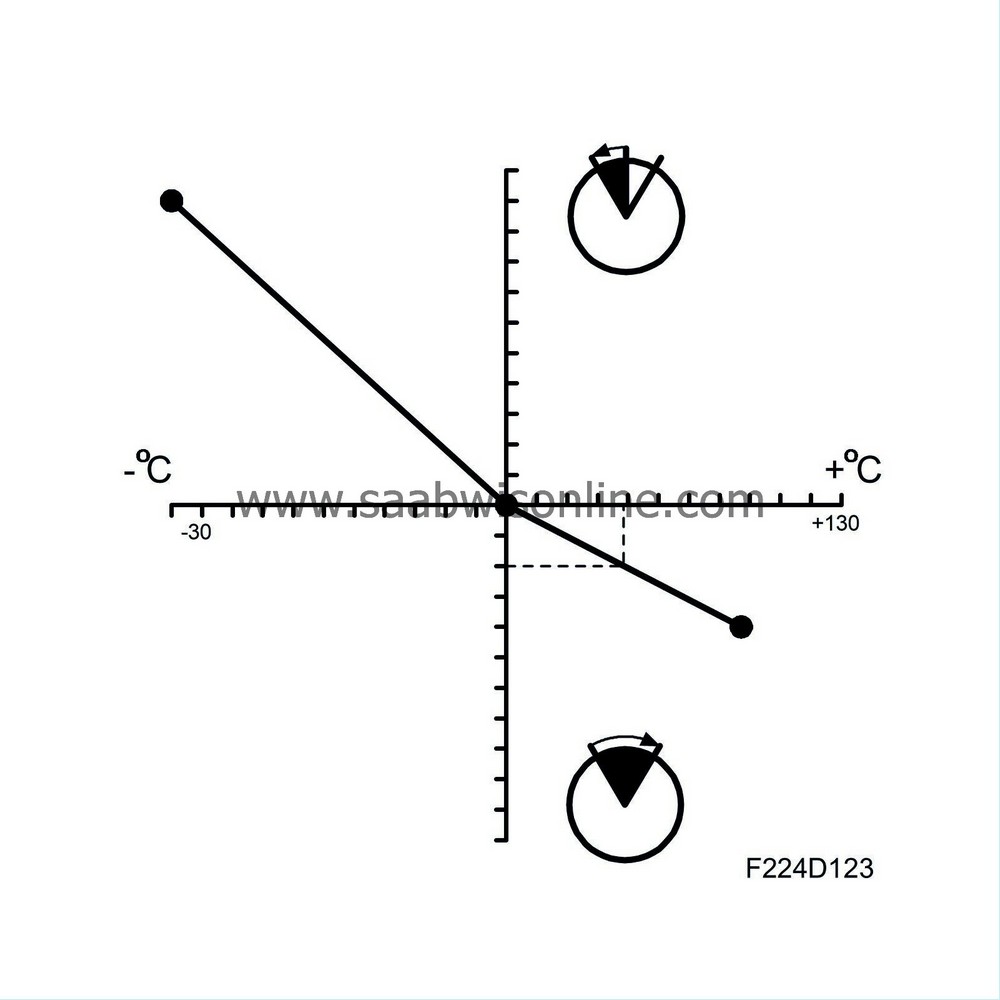Compensation
| Compensation |
Coolant temperature dependent compensation
This function compensates the normal ignition timing depending on the current coolant temperature.With coolant temperatures around +95°C, the compensation will be zero. The objective of compensation is to adjust the normal ignition timing so that the correct pressure is built up during combustion.
Coolant temperature affects the speed of the combustion.
Principle, coolant temperature above 95°C
With coolant temperatures exceeding + 95°C, the expansion rate of the flame is greater than it would be with a coolant temperature of +95°C.This results in the combustion pressure building up too early in the cylinder, which gives inferior efficiency and risk of knocking.
To counteract the higher combustion rate, the ignition will be retarded slightly to provide the correct pressure build-up in the cylinder.
See General, ignition .
Principle, coolant temperature below 95°C
With coolant temperatures below + 95°C, the expansion rate of the flame is lower than it would be with a coolant temperature of +95°C.This results in the combustion pressure building up too late in the cylinder, which gives inferior efficiency and reduced engine performance.
To counteract the lower combustion rate, the ignition will be advanced slightly to provide the correct pressure build-up in the cylinder.
See General, ignition .
| Ignition timing compensation, charge air temperature |

Charge air temperature dependent compensation
This function compensates the normal ignition timing depending on the current charge air temperature. The objective of compensation is to adjust the normal ignition timing so that the correct pressure is built up during combustion.Charge air temperature affects the speed of the combustion. The temperature of the charge air is affected by various factors such as outside temperature, vehicle speed and heating of the A/C condenser.
Principle, high charge air temperature
With high charge air temperatures, the expansion rate of the flame is greater than it would be under more normal conditions.This results in the combustion pressure building up too early in the cylinder, which gives inferior efficiency and risk of knocking.
To counteract the higher combustion rate, the ignition will be retarded slightly to provide the correct pressure build-up in the cylinder.
See General, ignition .
Principle, low charge air temperature
With low charge air temperatures, e.g. in winter, the expansion rate of the flame is lower than it would be under more normal conditions.This results in the combustion pressure building up too late in the cylinder, which gives inferior efficiency and reduced engine performance.
To counteract the lower combustion rate, the ignition will be advanced slightly to provide the correct pressure build-up in the cylinder.
See General, ignition .



